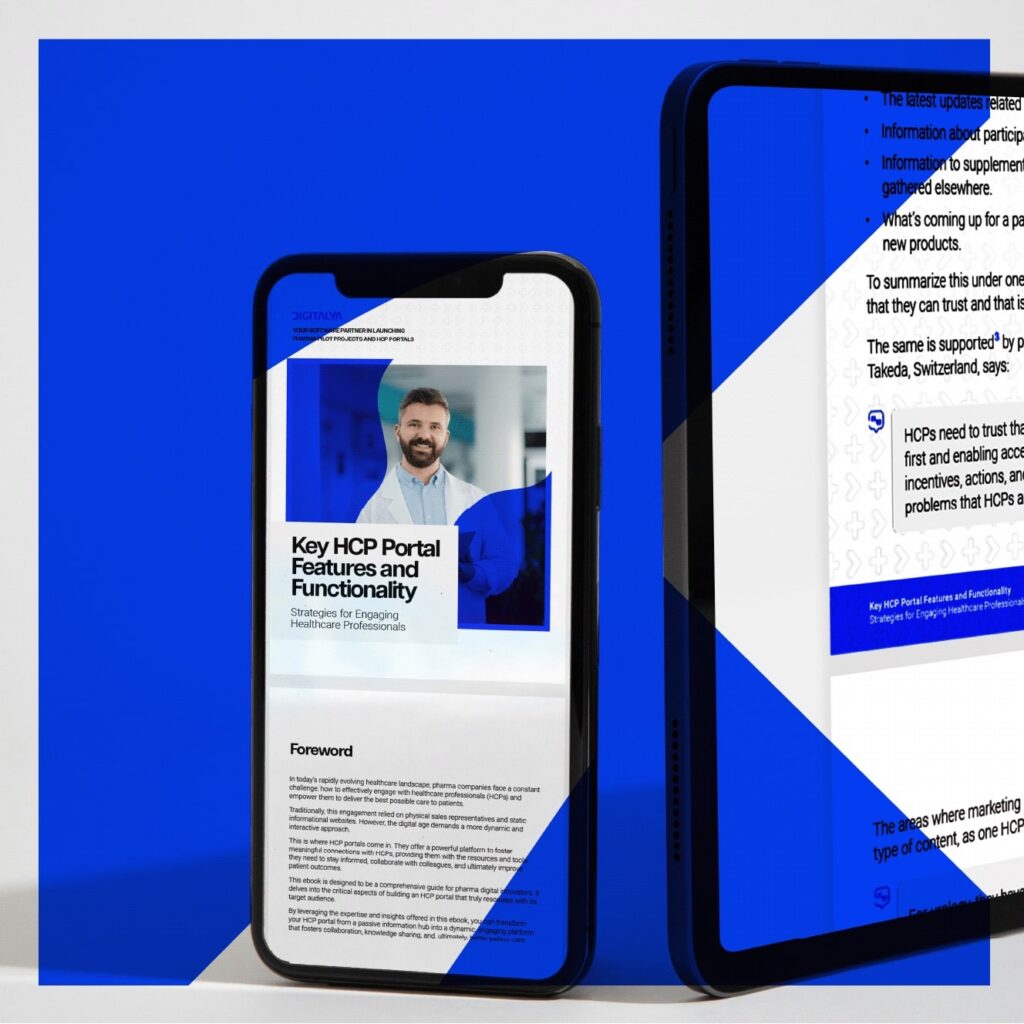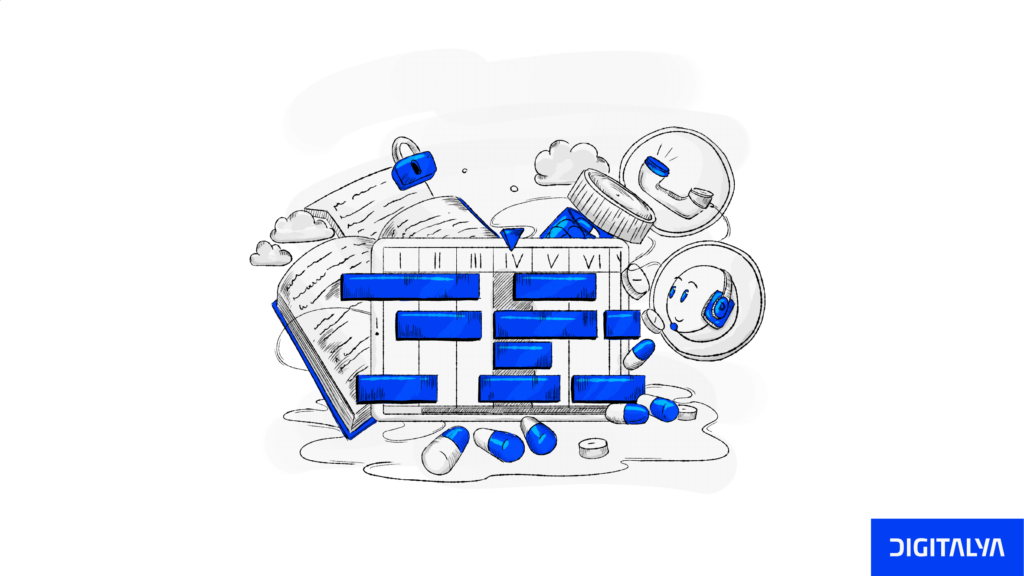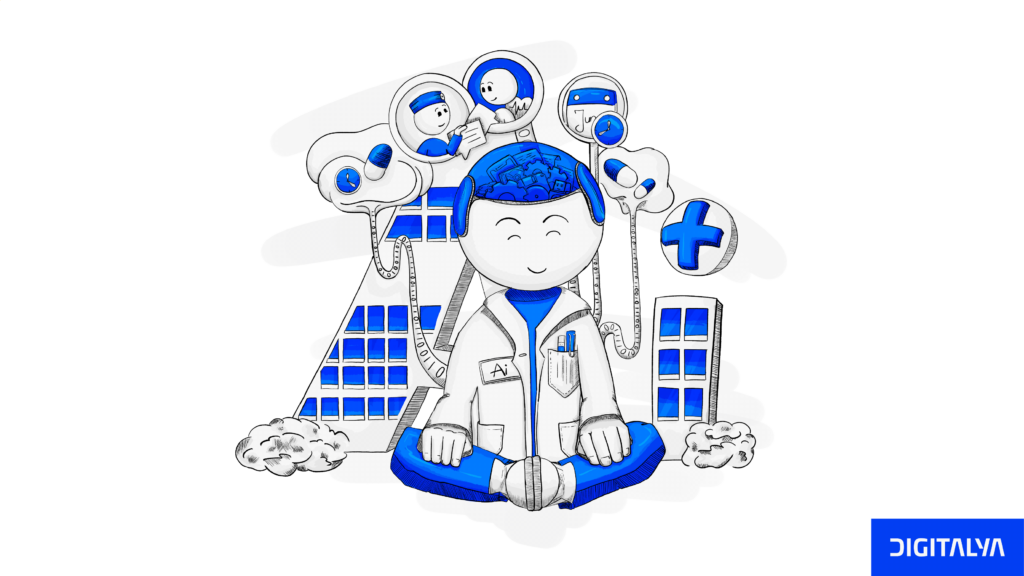The pharmaceutical industry constantly evolves, and software development plays an increasingly important role. Pharmaceutical software is critical to innovation, efficiency, and regulatory compliance.
There are two main approaches to pharmaceutical software development: insourcing vs outsourcing. As the name suggests, the first implies that the software will be developed in-house, while the second means hiring a third party vendor to do the work.
As with anything, there are pros and cons to each strategy. Insourcing can offer greater control over the development process and access to specialized expertise. Nevertheless, it can be more expensive and time-consuming. Outsourcing can save you money and time, but if you don’t choose your partner well, it can lead to quality control issues and security risks.
The decision between insourcing and outsourcing is not something to take lightly. There is no one-size-fits-all solution; the best approach will vary depending on your organization’s specific needs.
As we venture deeper into this comparison, it becomes evident that the insourcing and outsourcing of pharma software are not just operational choices but strategic decisions that can shape the future of the pharma industry.
Join us on this journey as we uncover the intricacies, nuances, and, ultimately, the tradeoffs inherent in this pivotal decision-making process.
1. Insourcing software development in pharma
Insourcing involves developing the software in-house, using the company’s own employees and resources, rather than outsourcing them to third party vendors or external development teams. Using an internal team for pharma application development has pros and cons, but let’s start with the advantages and finish with the disadvantages.
1.1 Advantages of insourcing
1.1.1 Control and security
Control and security are two of the most important factors to consider when choosing to insource pharma software development.
Control implies having the ability to manage the development process and make sure that the application meets its specific needs and requirements. This includes managing the design, development, testing, and deployment.
In-house teams can customize applications to align with the organization’s unique workflows, processes, and data-handling requirements. This can mean more efficient operations and better integration with existing systems.
Additionally, working in-house also means immediate responses. When issues or changes arise during software development, the team can respond quickly and make necessary changes. This agility can be crucial in a dynamic and highly regulated industry like pharma.
Security means protecting the software from unauthorized access, use, disclosure, modification, or even destruction and ensuring it complies with all applicable regulations.
By avoiding third party vendors or contractors, pharma companies can reduce the risk of sharing sensitive data with external entities. This way, the chance of data leakage or breaches is minimized.
While insourcing offers significant control and security advantages, pharma organizations must realize that these benefits come with increased responsibility. This means investing in cybersecurity measures, implementing robust access controls, conducting regular audits, and ensuring the team members are trained in security best practices.
Even more, staying current with evolving security threats and regulatory changes is vital to maintaining the highest level of data security in pharma software development.
1.1.2 Expertise and knowledge retention
When pharma companies work with an inhouse team, they ensure that the people involved in the process have the necessary expertise to develop the application effectively. This is important in the pharma industry since it often requires specialized knowledge.
Insourcing offers the opportunity for ongoing learning and skill development. Your team can stay updated with the latest industry trends, technologies, and regulatory changes. The teams understand the intricacies of the pharma industry – valuable specialized knowledge.
Additionally, companies can establish quality control capabilities – ensuring that the software meets the highest quality and compliance standards, reducing the risk of costly errors and regulatory setbacks.
Knowledge retention means having a company’s ability to retain its employees’ knowledge and skills. Insourcing implies providing the team with training and development opportunities. This is important since they must stay current on the latest technologies and best practices.
External vendors may change over time, leading to knowledge loss when critical personnel leave. With insourcing, the organization has more control over employee retention and can mitigate the impact of turnover by implementing knowledge transfer and succession planning strategies.
Even though expertise and knowledge retention are clear advantages of insourcing, pharma organizations should know the importance of continuous training and development to keep their teams up-to-date with the latest technologies and industry best practices.
1.1.3 Alignment with organizational goals
When companies insource software development, they can ensure that the application is developed to support the company’s goal. This is important since this kind of software is often used to achieve specific business objectives.
An insourced team can easily design an application that integrates seamlessly with the organization’s other systems and technologies. This can enhance efficiency and ensure the application aligns with the broader IT infrastructure and goals.
This alignment helps achieve current objectives and positions the organization for continued success and competitiveness in the evolving pharma landscape.
1.2 Challenges and limitations
1.2.1 Cost considerations
The cost is a critical aspect of insourcing a development project. Even though insourced teams come with benefits like complete control and alignment, they also come with costs and financial implications. Let’s take a look at the main cost considerations you should have in mind:
- Initial setup costs
- Personnel – hiring an in-house team comes with upfront costs, like salaries, benefits, recruitment expenses, and onboarding processes.
- Infrastructure – you must set up and maintain the necessary infrastructure, like hardware, licenses, development tools, and office space.
- Training – you have to offer training and skill development programs to your in-house team to keep up with industry best practices and the latest technologies.
- Operating costs
- Labor cost – ongoing costs like salaries, bonuses, health insurance, retirement plans, and other benefits.
- Infrastructure maintenance – regular maintenance and upgrades of hardware and software infrastructure.
- Overheads – including office space, utilities, or administrative expenses.
- Licenses and tools – like software licenses, development tools, or other resources necessary for the development project.
- Scalability and flexibility
- Scalability costs – if you want to expand your team to accommodate the demands of new projects, you will have to hire new personnel and develop your infrastructure.
- Resource allocation – you will have to reallocate resources within the organization to accommodate the development team.
- Opportunity costs
- Time-to-market – you may have to deal with longer development time due to having to build and train an insourced team.
- Focus on core competencies – you might have to divert attention and resources from your core competencies.
- Risk mitigation
- Risk management – including data security, compliance, and quality assurance.
Pharma companies must conduct a Total Cost of Ownership (TCO) analysis to assess the long-term cost implications of insourcing software development. This takes into consideration not only upfront and operating costs but also factors in potential savings and benefits over time.
The decision to insource software development or not should be evaluated in terms of its cost-effectiveness relative to outsourcing or other alternatives.
1.2.2 Resource constraints
Finding and hiring skilled software developers with expertise in the pharma industry can be both time and budget-consuming – another one of the disadvantages of insourcing. Additionally, the size of the team and the amount of training required can be limited by these resource constraints.
Most pharma companies operate within strict budgetary constraints. Insourcing software projects can strain this budget due to all the associated costs we discussed earlier.
1.2.3 Time-to-market pressures
Time-to-market pressures are a significant challenge that can affect the capability of a pharma company to bring its software products to market in a timely fashion. When insourcing the software development project, these challenges can be more pronounced:
- Resource availability and scaling – necessary resources may be limited, which means slowing down the project timeline or the scalability capabilities.
- Learning curve – not being familiar with the complexities of the pharma industry or its regulatory compliance leads to a learning curve that will delay project execution.
- Recruitment challenges – finding and attracting experienced developers with industry experience may produce significant delays.
- Balancing speed and quality – rushing to meet tight deadlines can lead to cutting corners and will damage the quality of the end product, affecting the time-to-market time.
- Project delays – resource turnover or technical challenges are also a factor that counts in the project deployment time.
2. Outsourcing software development in pharma
Outsourcing software development involves hiring external third party vendors or development teams to design, develop, and maintain software solutions tailored to the specific needs of pharma companies.
Just like with insourcing, there are pros and cons to this approach. Let’s discuss each.
2.1 Advantages of outsourcing
2.1.1 Cost savings and efficiency
This is one of the most significant outsourcing pros. Let’s explore these cost savings and efficiency increases that come with outsourcing:
- Labor cost savings
- Lower labor costs – working with an outsourcing partner leads to significant savings in terms of developer salaries and benefits.
- Elimination of overhead – costs like office space, utilities, and equipment are eliminated.
- Easy access to specialized expertise
- Cost-effective expertise – outsourcing firms have skilled and specialized teams with expertise in the pharma industry, saving you the cost of hiring your own talent.
- Faster skill acquisition – you can immediately tap into the vendor’s expertise, speeding up the development process and reducing the learning curve.
- Scalability and efficiency
- Flexible resource allocation – being able to scale up or down according to the project needs ensures efficient resource allocation and reduces the risk of underutilized in-house staff during periods of lower demand.
- Accelerated project timelines – outsourcing firms have established development processes and teams in place, meaning you benefit from faster project initiation and accelerated timelines.
- Reduced infrastructure costs
- Infrastructure savings – you no longer need to invest in additional hardware, software licenses, or development tools.
- Cost predictability
- Fixed costs – having an outsourced arrangement involves fixed costs or predictable pricing models, meaning you can plan your budget more efficiently. This leads to greater cost control and stability.
- Risk mitigation
- Reduced risk of project overruns – external vendors have experience in managing a software development project efficiently. This expertise can reduce the risk of project delays and overruns, resulting in cost savings.
- Quality assurance and compliance – the previously mentioned expertise also includes established quality assurance and compliance processes in place, reducing the risk of costly errors, compliance violations, and regulatory setbacks.
2.1.2 Access to specialized talent
Outsourcing firms have teams with diverse skills and expertise. You have access to developers with pharmaceutical expertise and knowledge in regulatory compliance who can develop your software project efficiently and according to your organization’s needs.
Many external vendors already invest in the latest technologies and tools relevant to software development in the pharma industry. This includes expertise in areas like data analytics, artificial intelligence, machine learning, or blockchain.
Additionally, these outsourcing teams have specialized talent with experience in developing software for complex tasks like clinical trial management, HCP engagement, or patient management.
Also, they have professionals with expertise in quality assurance, validation, and testing processes tailored to the pharmaceutical industry standards.
Multidisciplinary teams enhance collaboration and problem-solving for complex pharma projects.
2.1.3 Scalability and flexibility
Another advantage of outsourcing is adapting to changing project needs and efficiently allocating resources. With this strategy, pharma companies can quickly scale their development resources up or down based on project demands.
Access to a global talent pool helps pharma organizations tap into a wide range of skills and expertise to meet specific project requirements without dealing with the constraints of hiring and training in-house staff.
Also, custom software development agencies offer flexibility for efficient risk management. Outsourcing companies can adapt to unforeseen challenges, like technical difficulties or changes in regulatory requirements, often by reallocating resources and adjusting project strategies.
2.2 Challenges and limitations of outsourcing
2.2.1 Quality control and oversight
One of the disadvantages of outsourcing is making sure that the software solutions meet regulatory requirements, maintain data integrity, and adhere to quality standards. This can be difficult because of multiple factors:
- Geographic distance – this physical separation can hinder direct oversight and monitoring of development activities. This might lead to communication haps and challenges in real-time communication.
- Cultural and language differences – these barriers can lead to misinterpretation, misunderstandings, and miscommunications that can affect the clarity of the project requirements or expectations.
- Integration challenges – integrating outsourced software with existing pharmaceutical systems, databases, and infrastructure can be complex. Making sure that these integrations meet quality and security standards requires careful oversight.
- Vendor selection – selecting the right outsourcing partner with a proven record in pharma software development and a solid commitment to quality is crucial.
2.2.2 Data security and confidentiality
Data security and confidentiality are paramount concerns when outsourcing software development, especially in the pharma industry. Protecting sensitive data, like patient information, research findings, or intellectual property, is essential to prevent data breaches and maintain regulatory compliance.
- Data access and control – you must ensure that the outsourcing company has appropriate access permissions to only the necessary data for their tasks. You also have to determine data ownership and usage rights in the contract to safeguard your data.
- Data transfer and storage – you must make sure that data is encrypted during transfers and that it is securely stored on servers and databases.
- Compliance and regulations – the pharmaceutical industry is highly regulated, with strict data protection and privacy regulations. You have to make sure that your outsourcing provider complies with these regulations.
- Incident response – you have to develop a comprehensive incident response plan that outlines the steps to take in case of a data breach to minimize the impact and protect sensitive data.
- Third party risks – if your outsourcing provider uses subcontractors of third party vendors, you need to ensure that all parties involved adhere to the same stringent security standards.
2.2.3 Communication and cultural differences
Communication and cultural differences can be a significant disadvantage of software outsourcing. Issues like language barriers, different time zones, and cultural norms can lead to misalignment of expectations or collaboration challenges. However, these challenges can be overcome through communication with the outsourcing company and setting clear expectations right from the start.
3. The tradeoffs of insourcing vs. outsourcing pharma software development
Let’s make a side-by-side comparison to better underline the difference between outsourcing and insourcing.
| Factor | Insourcing Software Development | Outsourcing Software Development |
| Cost | Initial costs may be higher due to resource setup. | Often more cost-effective due to lower labor expenses. |
| Long-term operational costs may be lower. | Predictable and controlled budgeting through contracts. | |
| May involve overhead expenses for in-house operations. | Reduced in-house operational overhead costs. | |
| Cost conclusion | Can be more expensive, as companies have to invest in hiring and training staff and purchasing hardware and software. | Can save companies money on development costs, as they do not have to invest in hiring staff or purchasing hardware and software. |
| Time to market | May face delays due to resource constraints and learning curve. | May face delays due to resource constraints and learning curve. Potential for faster project initiation and execution. |
| In-house teams may prioritize other core activities. | Ability to meet tight deadlines with experienced teams. | |
| Project timelines can be more challenging to predict. | Can adapt to changing project needs more efficiently. | |
| Time to market conclusion | Can take longer, as companies have to go through the entire development process in-house. | Can help companies get their software to market faster, as they do not have to go through the entire development process in-house. |
| Control | High level of control over the development process and team. | Reduced control over the development process and team. |
| Direct oversight of in-house personnel. | Reliance on outsourcing partners for quality and progress. | |
| Ability to make real-time adjustments and changes. | Monitoring and oversight may require additional effort. | |
| Control conclusion | Companies have more control over the development process. | Companies have less control over the development process, as they depend on the outsourcing vendor. |
| Risk | Direct control over data security and confidentiality. | Requires clear data security agreements and oversight. |
| In-house expertise in data protection and compliance. | Risk of data breaches if security measures are inadequate. | |
| Data is handled and stored internally, reducing risks. | Potential exposure of sensitive data to external partners. | |
| Direct management of quality assurance and validation. | Compliance expertise provided by the outsourcing partner. | |
| In-house teams can implement rigorous testing standards. | Risk of inadequate quality control without proper oversight. | |
| Close alignment with pharmaceutical regulations and standards. | Need for clear quality control protocols and audits. | |
| Risk conclusion | There is a risk of quality control issues and security breaches due to resource limitations. | There is a risk of communication challenges and vendor lock-in. |
| Flexibility | Resources can be limited, leading to project delays. | Scalability allows for efficient resource allocation. |
| Dependence on hiring and retaining skilled personnel. | Can rapidly scale up or down based on project needs. | |
| Risk of resource turnover and project disruptions. | Availability of a global talent pool for specific needs. | |
| Flexibility conclusion | Less flexible, as companies cannot easily scale up or down their development needs. | More flexible, as companies can scale up or down their development needs as needed. |
| Access to specialized expertise | Companies may not have access to specialized expertise in-house. | Companies can gain access to specialized expertise that they may not have in-house. |
4. Choosing the right approach for your organization
Ultimately, the best approach for a pharma company will depend on its specific needs and circumstances. If you want to save money and get the software solution to market faster, outsourcing might be the best option.
However, if you want more control over the development process, you should consider insourcing.
Let’s list some factors that should be considered when deciding between insourcing vs. outsourcing:
- The size and complexity of the project – larger and more complex projects may be more challenging to insource, as they require a higher level of expertise and coordination.
- The budget – outsourcing can help you with saving money in the long run by reducing the risk of quality control issues and security issues.
- The timeline – insourcing can take longer than outsourcing, and the latter can give your organization more flexibility.
- The company’s in-house capabilities – insourcing may be the best option if the company has the necessary expertise and resources to develop the software in-house.
- The company’s culture – some companies prefer to have more control over the development process, while others are more comfortable with outsourcing.
By carefully considering all the factors mentioned in this article, you should be able to make the best decision for the specific needs of your pharmaceutical company.






